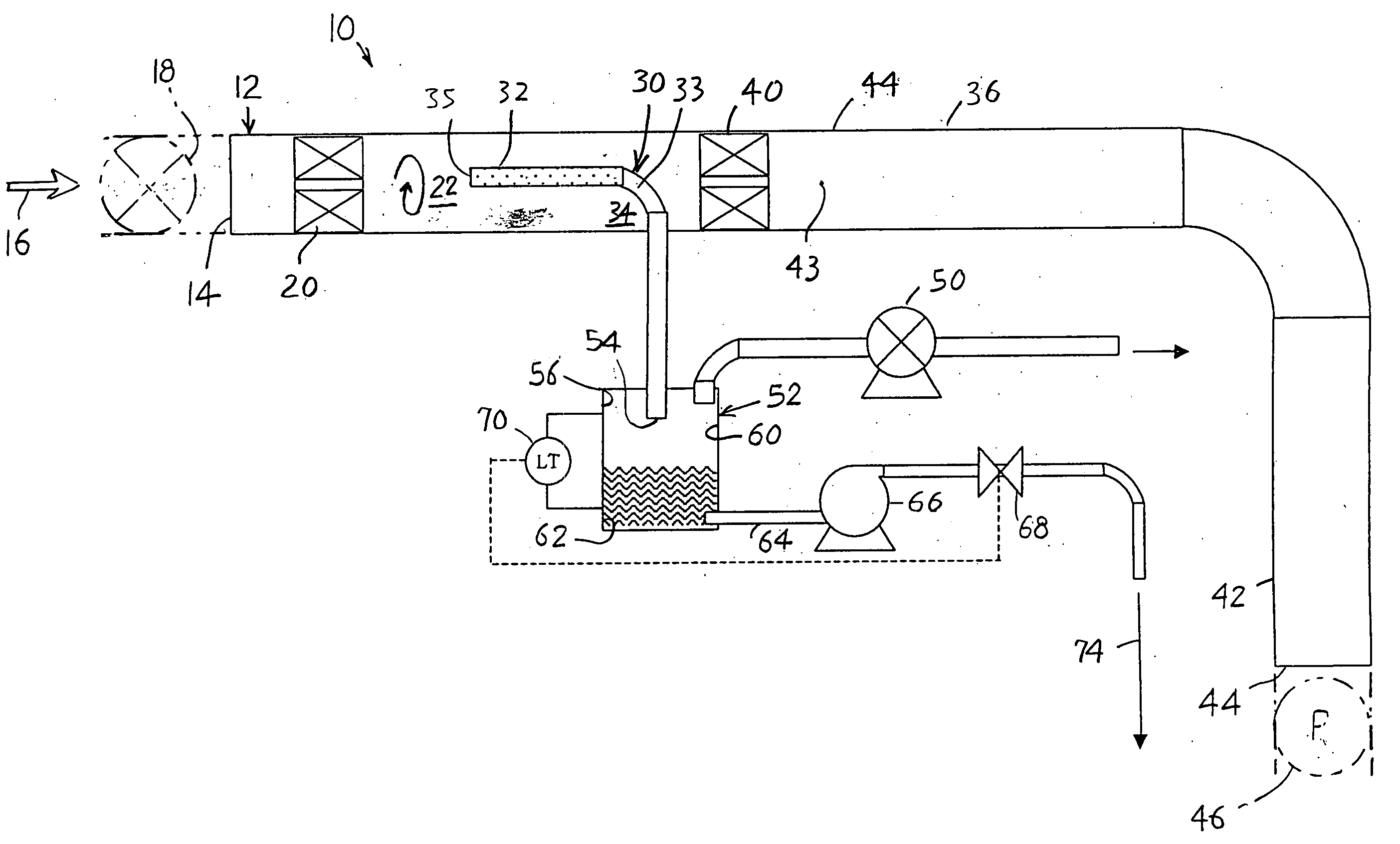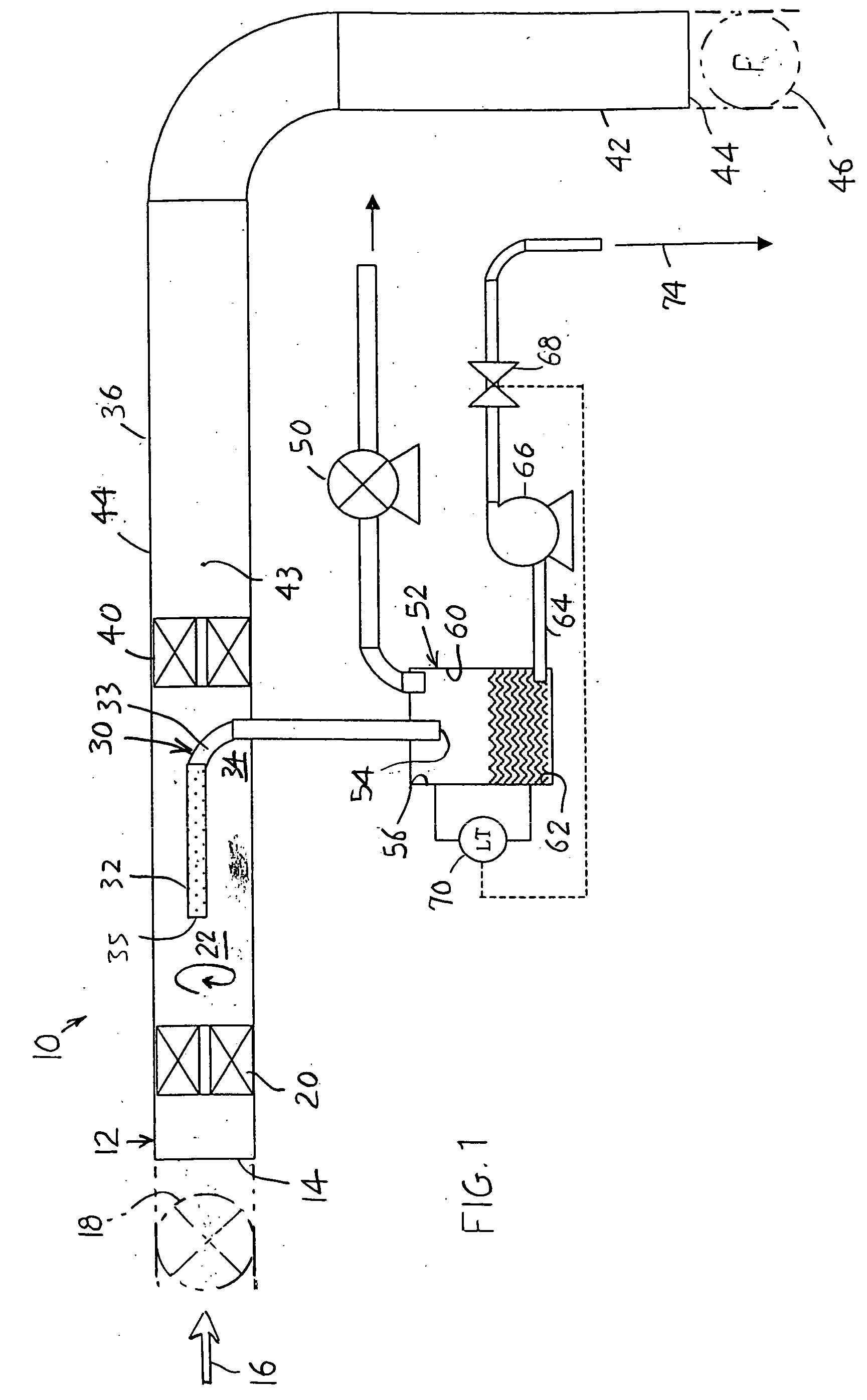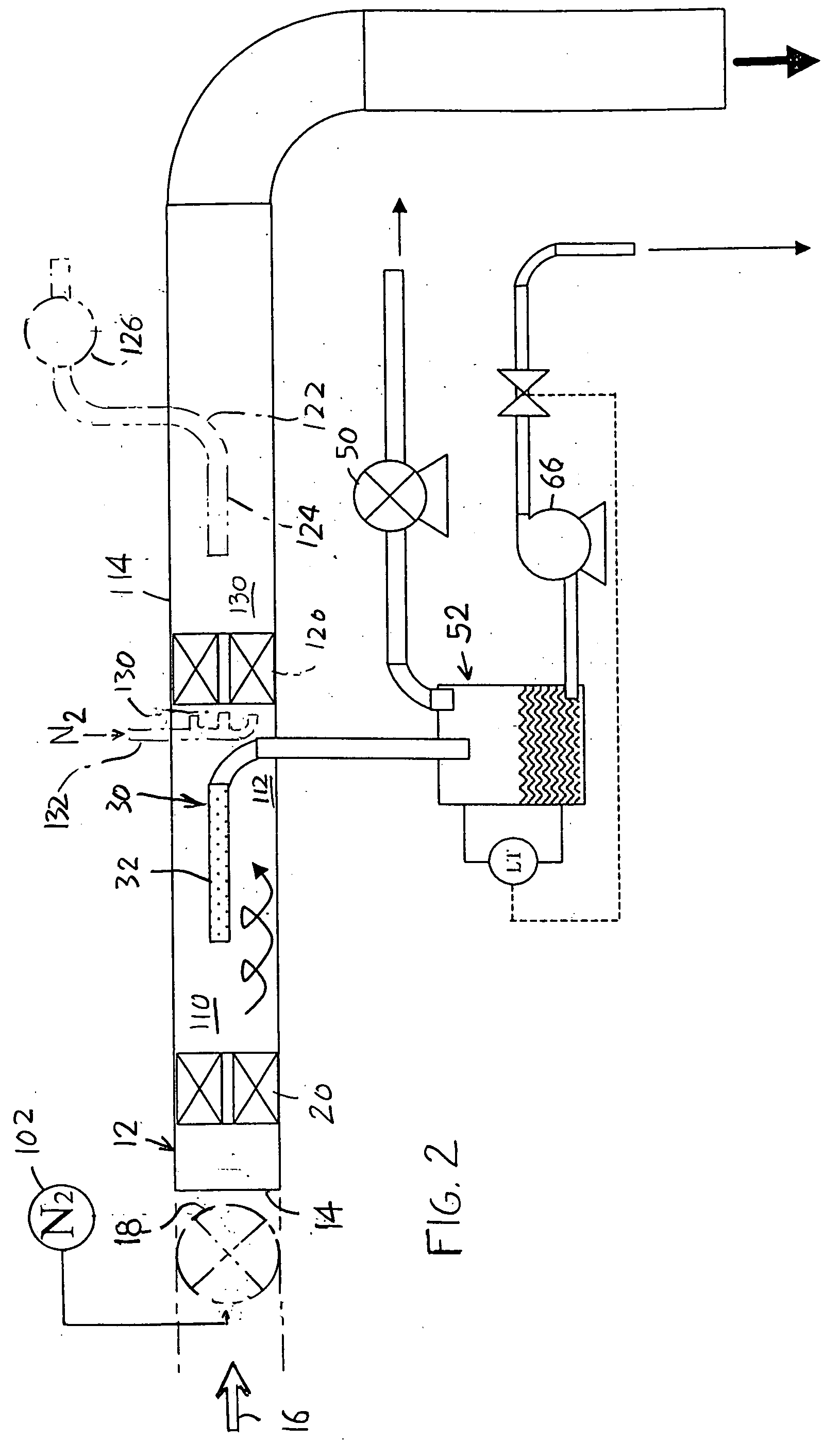Gas/liquid separation in water injection into hydrocarbon reservoir
a technology of hydrocarbon reservoir and gas/liquid separation, which is applied in the direction of liquid degasification, separation process, chemistry apparatus and process, etc., can solve the problems of reducing oxygen, reducing equipment, and reducing oxygen
- Summary
- Abstract
- Description
- Claims
- Application Information
AI Technical Summary
Benefits of technology
Problems solved by technology
Method used
Image
Examples
Embodiment Construction
[0009]FIG. 1 illustrates a system 10 with a main conduit, or water conduit, 12 with an inlet 14 that receives fluid 16 that is water that may have been filtered and that has dissolved gases. In the example to be described, the water is sea water (water with dissolved salts) with dissolved gases that consist primarily of air (21% oxygen, 78% nitrogen, 1% argon and trace amounts of other gases). It is the oxygen, which corrodes steels used in the construction of the water injection system, and which results in undesirable biological activity in a hydrocarbon reservoir, that is to be removed from the sea water. Where the fluid consists primarily of water, it sometimes will be referred to herein simply as “water.”
[0010] The system of FIG. 1 applies a vacuum to water at the entrance 14. This can be accomplished by a valve 18 upstream of the conduit. The restriction in flow caused by the valve is adjustable to regulate water pressure downstream of the valve. The reduced water pressure res...
PUM
| Property | Measurement | Unit |
|---|---|---|
| vertical height | aaaaa | aaaaa |
| pressure | aaaaa | aaaaa |
| length | aaaaa | aaaaa |
Abstract
Description
Claims
Application Information
 Login to View More
Login to View More - R&D
- Intellectual Property
- Life Sciences
- Materials
- Tech Scout
- Unparalleled Data Quality
- Higher Quality Content
- 60% Fewer Hallucinations
Browse by: Latest US Patents, China's latest patents, Technical Efficacy Thesaurus, Application Domain, Technology Topic, Popular Technical Reports.
© 2025 PatSnap. All rights reserved.Legal|Privacy policy|Modern Slavery Act Transparency Statement|Sitemap|About US| Contact US: help@patsnap.com



